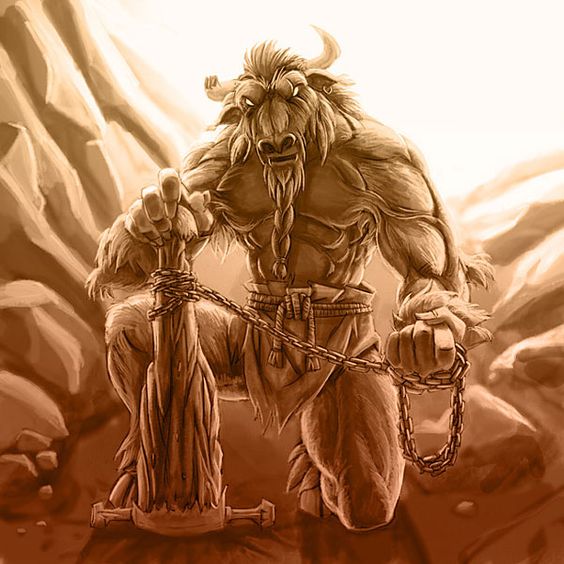Crete, the largest of the Greek islands, is a land of ancient myths and legends. Its storied past is woven with tales of gods, heroes, and fantastical beings that have captivated the imagination of generations. The mythical creatures of Crete are integral to the island’s rich cultural tapestry, reflecting the beliefs, fears, and hopes of its people. These creatures, ranging from benevolent spirits to fearsome monsters, play significant roles in the island’s mythology and folklore, offering a glimpse into the ancient worldview of the Cretans.
The Minotaur: The Most Famous Cretan Monster
Perhaps the most renowned mythical creature associated with Crete is the Minotaur, a fearsome beast with the body of a man and the head of a bull. According to legend, the Minotaur resided in the Labyrinth, a vast, intricate maze constructed by the master craftsman Daedalus on the orders of King Minos. The creature was born from the union of Pasiphae, Minos’ wife, and a divine bull sent by the god Poseidon. As punishment for Minos’ failure to sacrifice the bull, Poseidon caused Pasiphae to fall in love with it, leading to the birth of the Minotaur.
Every year, seven young men and seven young women from Athens were sent as tributes to Crete to be devoured by the Minotaur, a fate that symbolized the dominance of Crete over Athens. The hero Theseus eventually defeated the Minotaur with the help of Ariadne, Minos’ daughter, who provided him with a ball of thread to navigate the Labyrinth. The story of the Minotaur embodies themes of bravery, ingenuity, and the triumph of good over evil.
Talos: The Bronze Guardian
Talos, another prominent figure in Cretan mythology, was a giant bronze automaton created by Hephaestus, the god of blacksmiths, or by the inventor Daedalus, according to different versions of the myth. Talos was tasked with protecting Crete from invaders by circling the island three times a day and hurling stones at approaching ships. His immense strength and indestructibility made him a formidable guardian.
Talos had a single vein running from his neck to his ankle, sealed by a bronze nail. His downfall came when Medea, the sorceress accompanying the Argonauts, tricked him into removing the nail, causing his lifeblood, a molten substance, to pour out, rendering him lifeless. Talos symbolizes the ancient Greeks’ fascination with technology and their belief in the protective power of their gods.
The Kouretes: Divine Dancers and Warriors
The Kouretes were a group of mythical warriors and dancers associated with the nurturing and protection of the infant god Zeus. According to legend, when Rhea, Zeus’ mother, gave birth to him on Mount Ida in Crete, she hid him in a cave to protect him from his father, Cronus, who had devoured his other offspring. The Kouretes performed a vigorous, noisy dance, clashing their spears and shields to drown out the cries of the infant Zeus and prevent Cronus from discovering his whereabouts.
The Kouretes were considered demi-gods and were venerated in various Cretan rituals. Their role in safeguarding Zeus reflects the importance of ritualistic dance and martial prowess in Cretan culture, as well as the reverence for Zeus, the supreme deity of the Greek pantheon.
The Karkinoi: Giant Crabs of Crete
In lesser-known Cretan mythology, the Karkinoi were giant crabs that lived along the island’s shores. These creatures were believed to be formidable opponents, attacking both ships and sailors. The Karkinoi symbolize the unpredictable and often dangerous nature of the sea, a crucial aspect of life for the island’s inhabitants.
The myth of the Karkinoi may have origins in the natural appearance of large crabs found on the island, which were later exaggerated into monstrous creatures through storytelling. These myths served to explain the perils of the sea and the need for respect and caution when navigating the waters around Crete.
The Dactyls: Mysterious Smiths and Sorcerers
The Dactyls were a group of mythical beings, often depicted as dwarf-like smiths with magical abilities. They were said to have discovered and taught the arts of metalworking and other crafts to humans. According to some legends, the Dactyls were born from the fingers of the goddess Rhea when she dug into the earth to give birth to Zeus.
Residing on Mount Ida, the Dactyls were revered as patrons of metallurgy and magic. They were believed to possess knowledge of powerful incantations and rituals, bridging the gap between the divine and mortal realms. The myths of the Dactyls highlight the significance of craftsmanship and the supernatural in ancient Cretan society.
Conclusion
The mythical creatures of Crete provide a rich tapestry of stories that reflect the island’s cultural and historical heritage. From the terrifying Minotaur to the protective Talos, these beings embody the values, fears, and beliefs of the ancient Cretans. Exploring these myths offers a fascinating insight into the ancient imagination and the enduring legacy of Crete’s mythological past. Through these tales, the island’s history and culture continue to captivate and inspire, reminding us of the timeless power of mythology.


